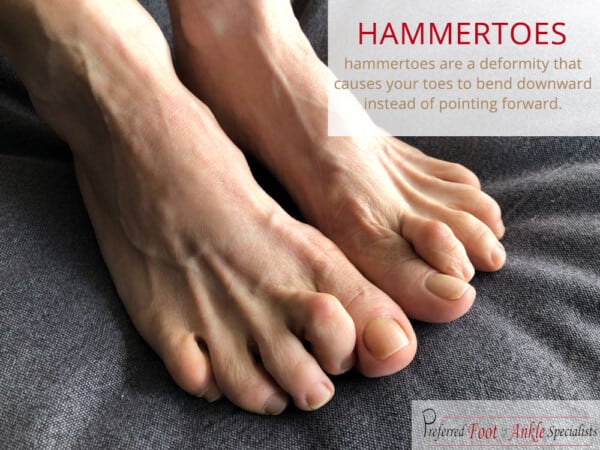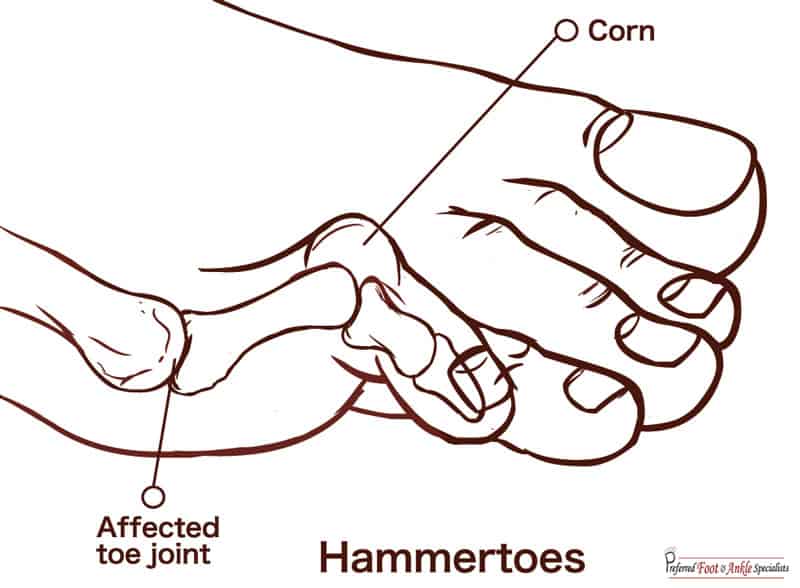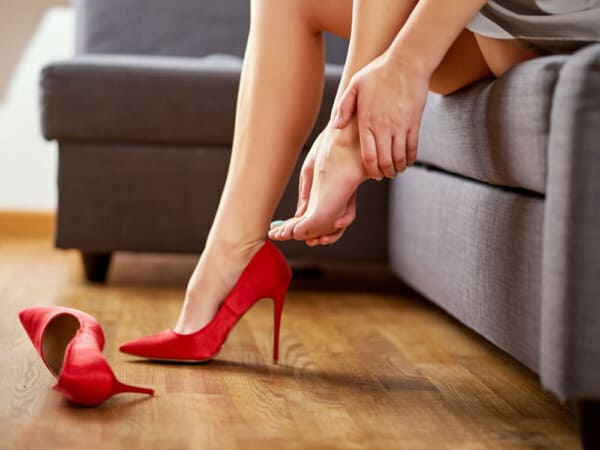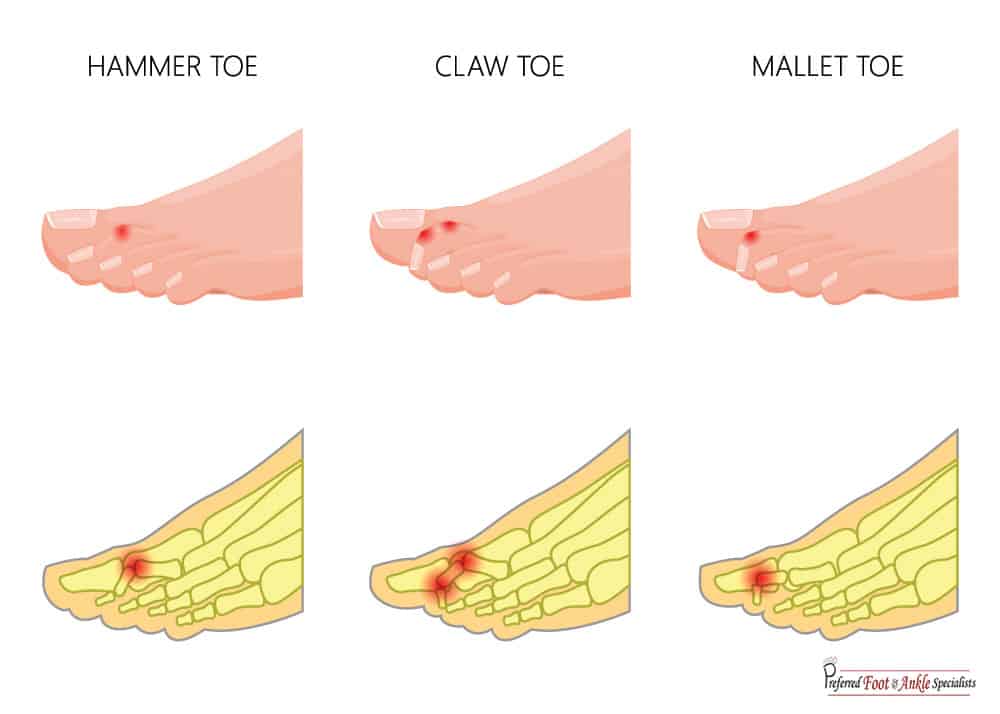Hammertoes
Hammertoe Symptoms, Causes and Treatment
What Are Hammertoes?
Also known as mallet toe, hammertoes are a deformity that causes your toes to bend downward instead of pointing forward as in a healthy foot.
Although the condition may be present at birth, hammertoes usually occur over time, typically due to the patient wearing certain footwear or experiencing acute injury or chronic illness. Conservative treatment is usually effective when treating hammertoes. Severe cases, however, may require surgery to correct.

Types of Hammertoes
The two types of hammertoes are flexible and rigid.
- Flexible: If you can still move your toes at the joint, it’s a flexible hammertoe and that means you have milder form of this problem. There are several treatment options available to help fix it.
- Rigid: Rigid hammertoe is a condition where tendons get rigid and press the joint out of alignment. Once this stage occurs, you won’t be able to move your toe anymore. Surgery may need to take place in order for it to change back into its natural state!

What Are the Symptoms of Hammertoes?
The main symptom of hammertoes is the toes pointing downward. Patients may also experience pain in the affected joint as well as calluses or corns. These are caused by the raised joint continually rubbing against the shoe.
Causes of Hammertoes
The main cause of hammertoes is footwear that has a high heel and/or too-tight toe box. This type of shoe forces the toes to curl downward. Over time, that downward curl may become permanent.
Although less common, illness or injury may also cause hammertoes to develop. Certain chronic conditions, such as diabetes and arthritis, may cause musculoskeletal changes that impair balance. This includes dysfunction in the ligaments, tendons, or muscles that help support the feet and toes, so that they remain straight and flat while standing.
Acute injury, such as breaking or jamming the toe, may also cause hammertoes.

Diagnosing & Treating Hammertoes
Diagnosing hammertoes begins with a thorough examination of the patient’s foot. Your podiatrist may also order X-rays to rule out injury or other issue with the affected bones and joints.
Conservative treatment usually begins with advice to change the patient’s footwear. In addition, to relieve pressure on the toe, your podiatrist may recommend pads or orthotics.
Patients who still have some flexibility in the affected joint may be given exercises to perform. This usually involves using the toes to pick up lightweight objects, such as towels or marbles. Performing these exercises will help return healthy function by stretching and strengthening the toe.
Hammertoe Surgery
Painful or severe cases of hammertoe may require surgery to correct. Most hammertoe surgeries involve repairing the tendon that’s causing the toe to remain bent. However, in some cases, a piece of bone may need to be removed in order to straighten the toe.

Hammertoes FAQ
Who is at greatest risk of developing hammertoes?
- Age, as the condition develops over time
- A family history of hammertoe
- Having arthritis or diabetes
- Your second toe being longer than your first toe
Can hammertoes be prevented?
The best way to prevent most foot problems, including hammertoes, is by wearing comfortable, well-made shoes that fit well. Look for shoes that:
- Are adjustable (have laces or straps) for a more custom fit
- Feel comfortable as soon as you try them on
- Have a low heel, so that weight is distributed evenly across the foot
- Have a wide toe box that allows your toes to lie flat when standing or walking
Whenever possible, shop for shoes toward the end of the day. Your feet tend to be larger then. You should also try on shoes before buying them. The right size shoe leaves a half-inch gap between the end of the shoe and your longest toe.
Is there a difference between hammertoes, mallet toes, and claw toes?
Yes, it all comes down to which toe joint is bent.
- Hammertoes bend at the middle joint
- Mallet toes bend at the end joint
- Claw toes bend at both the middle and end joints
All Foot & Ankle Conditions We Treat
Advanced Foot & Ankle Solutions
Have Questions or Need Care?
We’re here to help! Schedule your appointment online now for fast and easy care.
